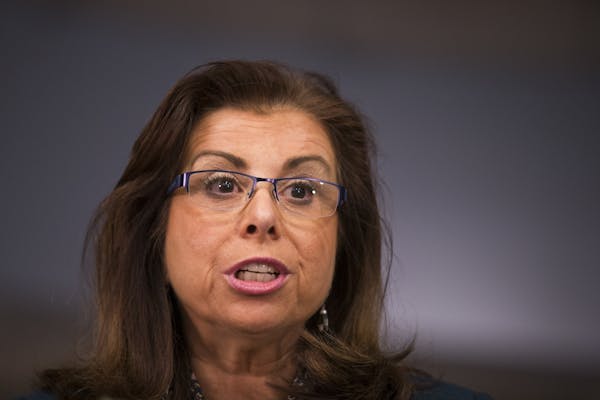Suspensions and fights rose sharply at St. Paul School District high schools in a rocky first quarter marked by several high-profile incidents.
The number of events resulting in students being disciplined jumped nearly 50 percent — from 118 in the first quarter of 2014-15 to 176 this year, according to district data.
Overall, suspensions were up nearly 60 percent, from 639 to 1,115, with more than three-quarters of the students being black, a point of concern to Superintendent Valeria Silva. About 30 percent of St. Paul's 37,800 students were black, according to the Oct. 1, 2014, enrollment reported on the school district's website.
"I am not proud of these numbers and we still have incredible racial disparity of students receiving our harshest of consequences," she said earlier this week. "But they are our current reality."
Release of the data came a week after a Central High student was charged with felony assault after he allegedly choked a teacher.
Earlier this fall, students at Como Park and Humboldt high schools engaged in fights so large they were described by police as "riots." In October, a Harding High student was caught in class with a handgun in his backpack.
The district broke down the disciplinary events by four categories, with possession of dangerous weapons being one and fights and assaults being two others. Fighting-related suspensions have been cited by the district as a barometer of a school's climate. Districtwide, suspensions in that category are up 61 percent in the high schools — from 54 to 87.
High schools seeing some of the most dramatic increases from the first quarter of last year to this year were Central — where suspensions because of fights rose from less than five in last year's first quarter to 18 in the first part of this year — and Como Park, where fight-related suspensions went from five to 20.
The number of fighting-related suspensions had held steady in the years between the first quarter of 2012-13 and first quarter of 2014-15.
Police numbers differ
While fights in the schools are up, police calls to St. Paul schools appear to be slightly down compared with years past.
Through Oct. 31 of this year, there were 508 police reports filed regarding incidents at St. Paul schools. A year ago there were 806 reports filed during the same period, and in 2011 St. Paul police responded to more than 1,100 incidents in the St. Paul Public Schools.
Through the end of October, there were 30 police reports filed involving disturbances or disorderly conduct in the St. Paul schools — compared with 54 in 2014, 42 in 2013 and 67 in 2012. Police responded to 118 incidents involving assaults through Oct. 31, 2015, compared with 170 in 2014 and 222 in 2013.
While suspensions are up this year, Silva and her administration have been criticized as being lax on discipline in recent years.
A Caucus for Change movement that helped elect four political newcomers to school board seats in November grew in part from teachers' concerns that the district needed higher expectations of students and greater consequences for those who misbehave and disrupt classrooms.
After the Central High incident, the St. Paul Federation of Teachers asked that contract talks go into mediation. It is pushing an ambitious restorative-justice proposal aimed at improving school climate by drawing on the expertise of counselors, social workers and psychologists, and by putting schools in charge of efforts to turn around problem behavior.
A mediation session was scheduled for Thursday night, and Denise Rodriguez, the union's president, cited the need to prepare for the talks as reason to decline comment on the district data.
"Our goal is to reach an agreement that benefits St. Paul students and educators through in-depth conversations in the mediation process," she said. "Interviews today will not advance that goal."
Michelle Walker, the district's CEO, said Thursday night that the district's scrutiny of suspension numbers was not in response to the teachers' request for mediation, but rather part of a continual examination of numbers and effort to make sure expectations of students are clear and consequences are fairly and evenly applied.
Racial disparities in suspensions is not a new problem, Walker said. "We are trying to get at the causes [of the increase in suspensions and the racial disparities], but as of yet we have no conclusions," she said. "We're talking to principals and others to try to get to the root causes."
jim.walsh@startribune.com alonetree@startribune.com
Body camera video shows Minnetonka man repeatedly shooting at deputies before dying in firefight
Oakdale issues warning after coyote attacks dog in nature preserve

Anoka County extends search for county administrator

Minneapolis schools, teachers reach tentative agreement to avert strike

